We are complete beginners when it comes to gardening. Last year was the first time I finally “dug” in and started a small herb garden outside my kitchen door. It was wonderful sending the kids out to grab fresh herbs for dinner, but come winter, we were back to dried.
I’ve always been interested in growing our own food and herbs year-round, but as a complete novice, I had no clue how to start. So it could not have been better timing when I was contacted by SucSeed last November to see if we’d like to try out their indoor hydroponic garden system and share our experience with you. SucSeed’s small-scale hydroponic plant incubators allow families and communities to grow their own fresh produce year round with no sun, no soil, and no fuss for around 30 cents a day. That sounded perfect for us!
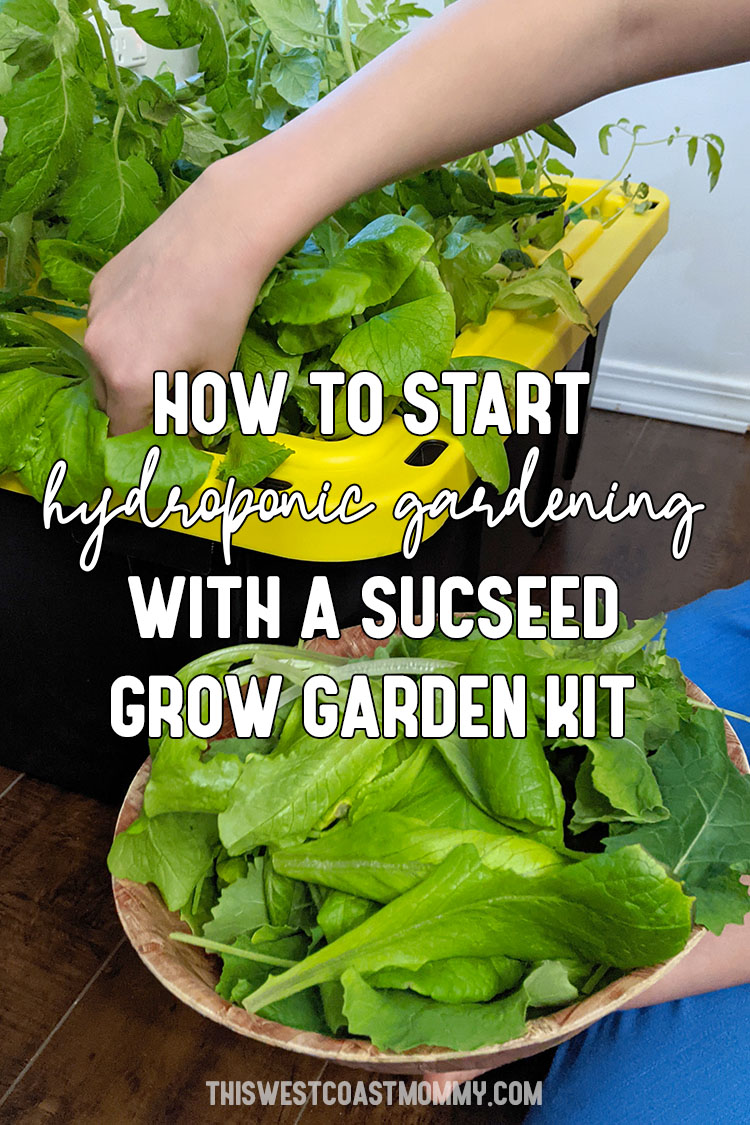
Not only did I love the idea of growing our own fresh produce, but I knew this would also be a wonderful addition to our home learning curriculum too. What a fantastic opportunity to observe the plant life cycle and guide hands-on learning with my kids about plant science, agriculture, nutrition, the scientific method, and more!
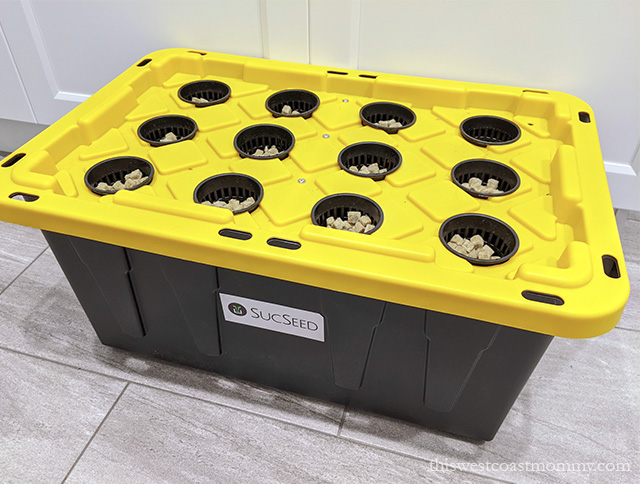
SucSeed garden kits come with a full-spectrum LED grow light, but we still placed our tank next to a large window for extra light. The set-up was quite straightforward. We filled the tank with enough water to skim the bottom of the net pots, set up the hydroponic bubbler system, then added the nutrients to the water in the recommended amounts. Each garden comes with pH strips to make sure the nutrient solution is just right for healthy plants – not too acidic and not too basic.
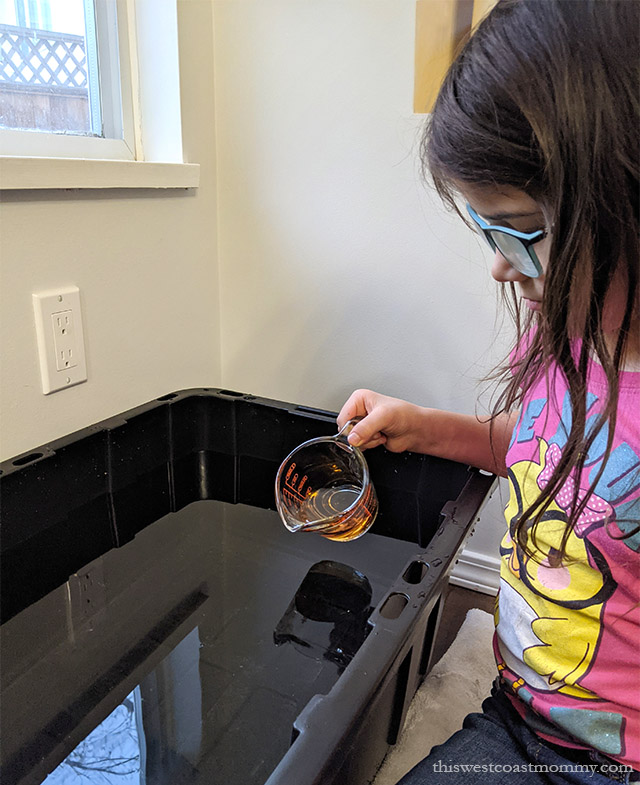
Adding the nutrients to our grow tank.
For our first attempt at hydroponic gardening, we decided to plant kale, romaine, buttercrunch lettuce, and cherry tomatoes. The kids filled each pot halfway with rockwool growing medium and dipped them in the nutrient solution. In each pot, we split 3 rockwool cubes in half and tucked a few seeds in the middle. Then we closed up the rockwool cubes, placed them strategically inside the pots, and waited. Every day the kids eagerly searched our garden for any hint of green. It only took three days for us to spy our first baby kale seedling!
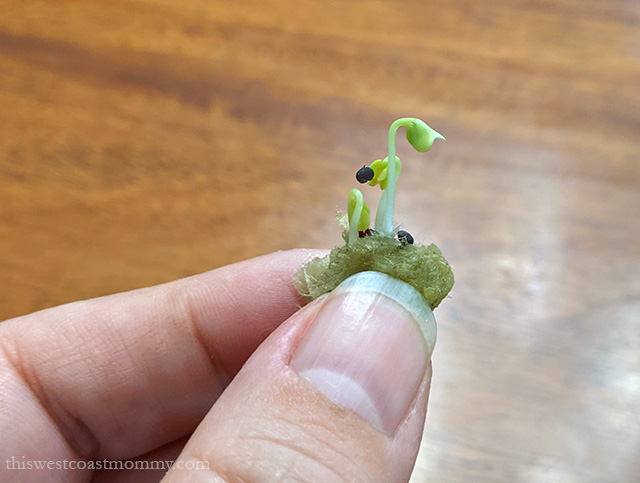
The kale showed up first, and less than a week later our romaine and buttercrunch appeared. The tomatoes took about two weeks to germinate, but once they started growing they really took off. (We also tried some spinach, but it didn’t make it.)
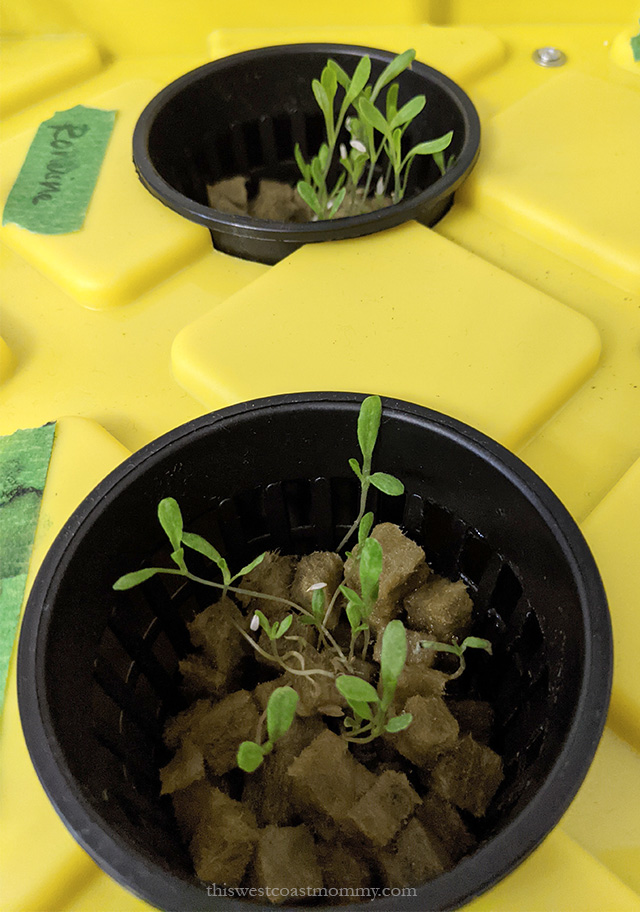
Unlike a regular outdoor vegetable garden, this was hardly any work at all. There was no weeding, no watering, and no pest control. I bought a smart plug that let me automate the grow light schedule, so other than topping off the tank with water and nutrients every couple of weeks, we were able to just sit back and watch our garden grow.
Here’s what our garden looked like at four weeks.
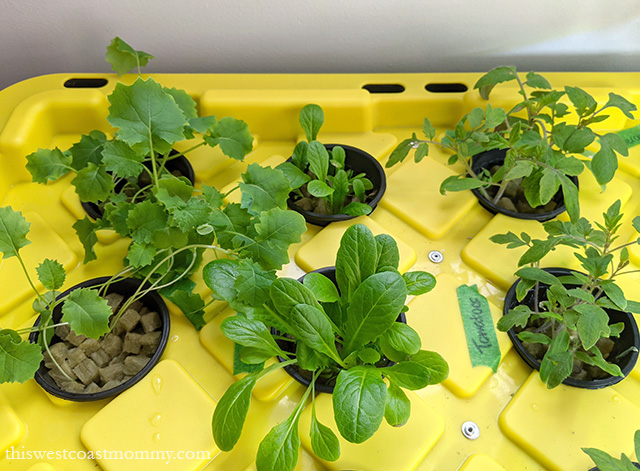
And this was around six weeks.
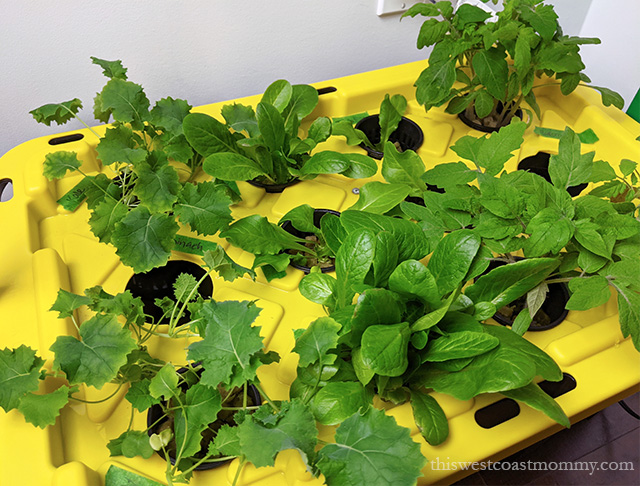
We could literally see our plants growing from day to day. Less than eight weeks after planting, here’s what our garden looked like!
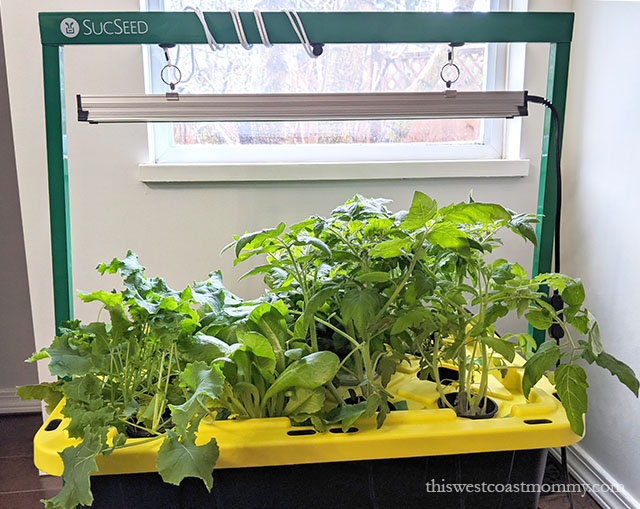
Nine weeks after planting, we harvested our first batch of kale, buttercrunch lettuce, and young romaine.
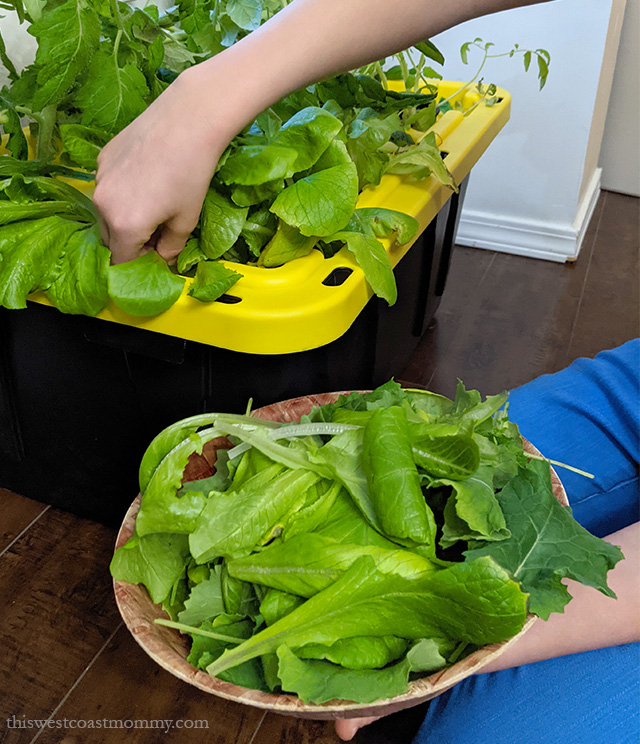
I added some tomatoes, berries, and pecans, and this was the delicious and nutritious homegrown salad we had at dinner that very night!
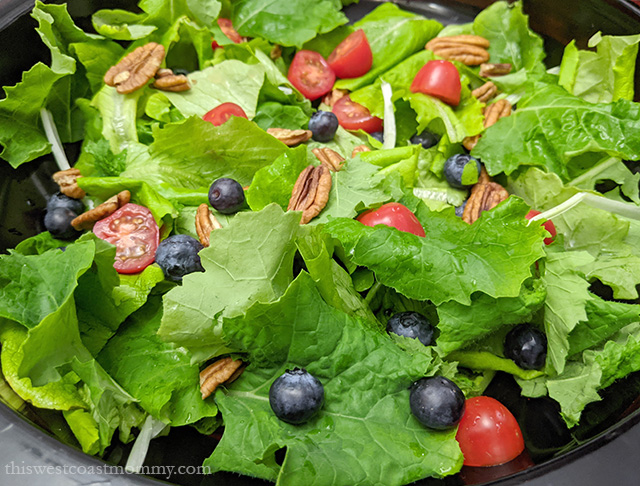
The girls thought our salad tasted miles better than the store-bought salad mix, and I couldn’t agree more.
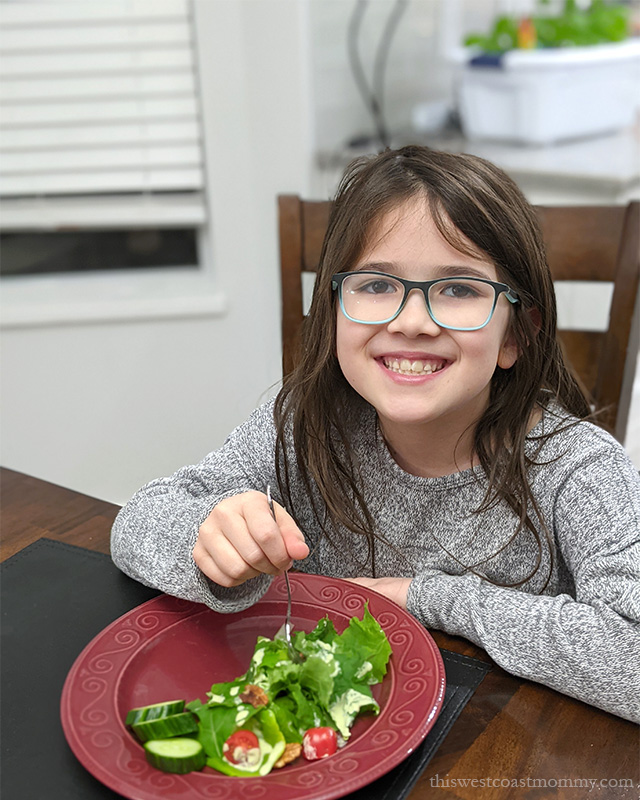
By the way, our salad dressing was also made at home with fresh basil growing in a SucSeed mini garden on my kitchen counter. We used to buy bunches of basil from the grocery store, but I often ended up throwing most of it out when it didn’t get used in time. Growing our own means fresh herbs year-round, no waste, and we get to enjoy watching it grow too!
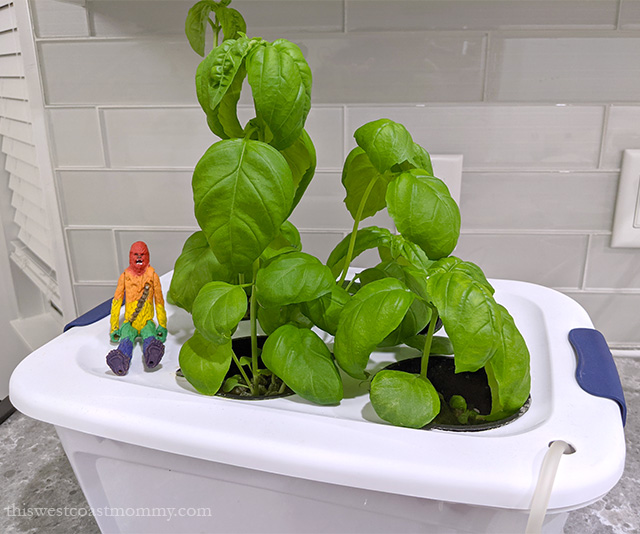
Back in our grow garden, we’ve switched over to flowering nutrients (included in the Educator Grow Garden kit) while our cherry tomato plants continue to grow. Once they flower, we’ll cross-pollinate them by hand for our first crop of cherry tomatoes.
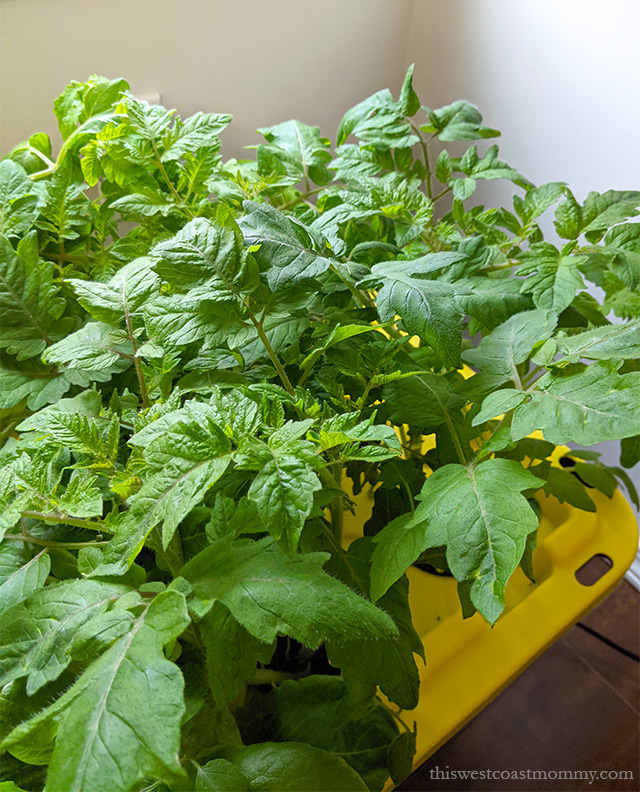
One thing we learned from our first attempt at indoor gardening was to pay attention to the spacing recommendations. You can see these tomato plants are big, and they were already starting to take over before it was even time to pick the lettuce. Next time we’ll leave more space between the plants. My plan moving forward is to start a new batch of salad greens every week so we always have some on the go.
What Can You Grow?
If you were wondering what kind of plants you can grow in a garden like this, SucSeed has provided a helpful list of suggestions:
- Lettuces – arugula, buttercrunch, spicy mustard greens,, romaine, fricassee, leafy greens, endive
- Greens – spinach, kale, swiss chard, bok choy, celery
- Flowering plants – tomatoes, peppers, cucumbers, beans, strawberries
- Herbs – anise, basil, catnip, chamomile, chervil, chives, cilantro, coriander, dill, fennel, lavender, marjoram, mint, oregano, parsley, rosemary, sage, tarragon, thyme
Grow Gardens
Each Grow Garden can yield an average of 175 pounds of fresh produce a year! The Grow Garden Starter Kit ($389.99) comes a 64 liter grow tank with 12 net pots, a full spectrum LED grow light, hydroponic bubbler system, 2 x 500 ml bottles of nutrients, enough rockwool grow medium for one harvest, pH test strips, and lettuce seeds.
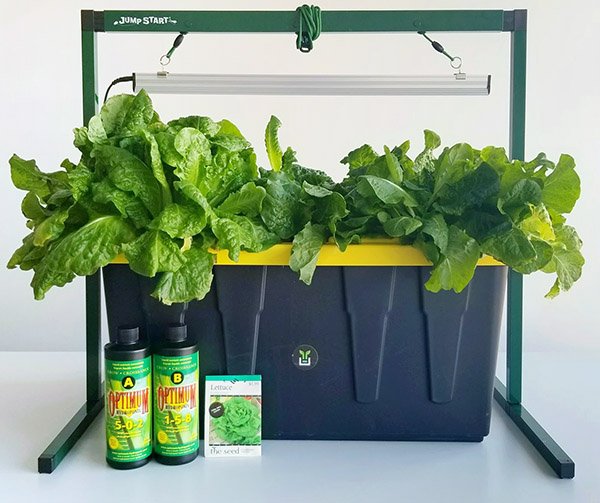
The Educator Grow Garden ($499.99) includes a 64 liter grow tank with 12 net pots, a full spectrum LED grow light and light stand, hydroponic bubbler system, 4 x 500 ml bottles of nutrients, 4 large bags of rockwool grow medium, pH test strips, and 6 packages of seeds – everything needed to grow your greens for an entire school year.
If you’re looking to start with something a little less ambitious, SucSeed also makes smaller gardens that fit right on your kitchen counter, perfect for growing herbs and salad greens. The Grow Kids Garden ($169.99) yields an average of 35 pounds of leafy greens a year, with the added fun of a LEGO-compatible lid. The Grow Kids kit includes a 12 liter grow tank with 4 net pots, a clip-on LED grow light, hydroponic bubbler system, 2 x 500 ml of nutrients, enough rockwool grow medium for one harvest, pH test strips, and lettuce seeds to get you started.
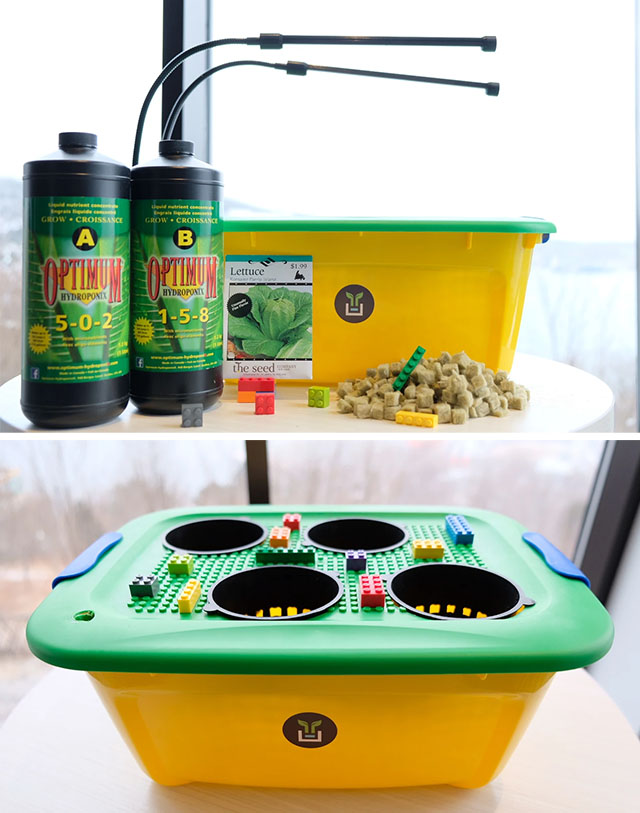
SucSeed also recently starting offering Micro Garden Kits ($5.99/$19.99 for 5 kits) with everything you need to grow small batches of nutritious microgreens in your own jar. What a great way to get kids excited about plant biology and development!
About SucSeed
SucSeed first sprouted from Enactus Memorial, a solution-minded team dedicated to improving the standard of living at home and across the country. With national and international awards under their belts, the team worked with expert agriculturists and engineers to develop a small-scale hydroponic system that would help struggling communities. This is especially important in Canada’s north, where many families face high costs and poor quality food.
As a sustainable social enterprise, SucSeed systems are produced and fulfilled by non-profit partner Choices for Youth, an organization that supports youth who face barriers to housing and employment. Not only does SucSeed bring the garden inside, they’re educating youth, providing at-risk teens with work experience, and creating horticultural therapy programs for seniors. A portion of all profits work toward eliminating food insecurity in Canada’s north.
Win a Grow Kids Garden
Teach your kids how to grow their own food year-round, without soil or sun! I’ve teamed up with SucSeed to send one family a Grow Kids hydroponic garden kit of their own. Enter in the giveaway widget below. This giveaway is open to residents of Canada, 18+ All the winner’s entries will be verified.
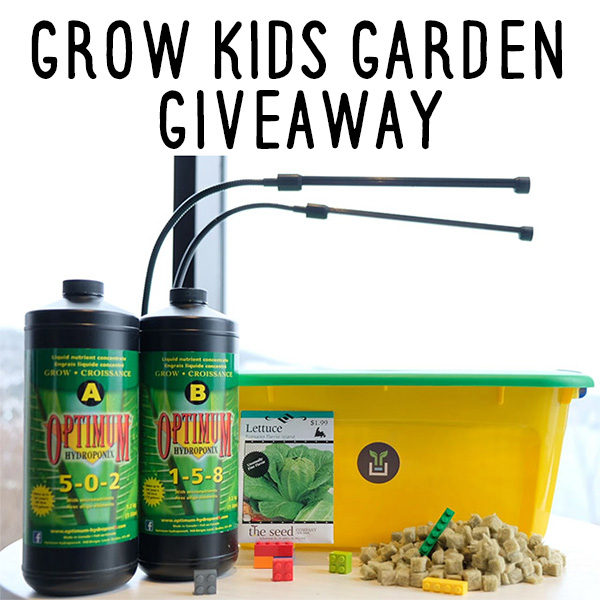
Disclosure: I received sample items to facilitate this review. All opinions expressed are completely honest and my own, based on my personal experience. Your experience may differ. This post contains affiliate links. As an Amazon Associate I earn from qualifying purchases at no additional cost to you.


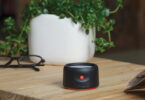





I’m interested in growing leafy greens like spinach or lettuce. They never seem to take off in our yard.
I would like to start with tomatoes and peppers.
I would love to grow fresh lettuce, tomatoes and herbs to make the most amazing salads without even leaving my home.
We would love to grow tomatoes, cucumbers and carrots.
I would like to grow some lettuce and herbs, like cilantro or basil.
lettuce and tomatoes
I would love to grow lettuce, parsley and dill.
I would grow herbs like cilantro, basil and parsley.
I would grow veggie greens and herbs.
I would love to try growing the jalapeno peppers and snow peas!
I’m hoping to grow cat grass to be honest
I’m most interested in growing different kinds of lettuce, spinach, and herbs.
I would like to grow arugula!
some basil and dwarf kale are two types of seeds which we would choose
We would love to grow herbs like oregano and chives
We’d like to grow lettuce, tomatoes and herbs.
This is so neat. My son loves picking tomatoes from grandmas garden would love for him to be able to grow some cucumbers (his favourite veggie) at home! »z
I am most interested in growing spinach and lettuce.
We’d love to try fresh lettuce and some herbs!
This is so neat! And so cool for the kids to learn about!
Love to grow fresh herbs (basil in particular) and lettuce sounds fun!
I would love to grow lettuce, kale, and basil with this!
I attempted to grow lettuce and herbs with my kids last year. Turned out to be an epic fail! Would love to have something like SucSeed to help myself and my kids make salads with food we have grown. (BTW, my daughters name is Kaleigh, her nickname is Kale….and her favourite lettuce is Kale! I know lol corny right?!) Please help Kale grow Kale 🥬
I would grow kale and lettuce!
I would love to grow peppers
Looking to grow some herbs perhaps but my daughter really only likes carrots so perhaps those!
My daughter is interested in growing tomatoes and basil!
I would love something like this to grow our herbs and would love to start salad greens. In Northern BC we have a very short growing season and I have been looking for something just like this!
I would grow spinach.
I have been reading other articles on these hydrophonic gardens to grow your own and they are really interesting. I love vegetables and salads which are healthy and natural. I’ll have to shop around and see what is offered in our town or possibly online. I have friends that have used these and I’d love to try it also at least try once.